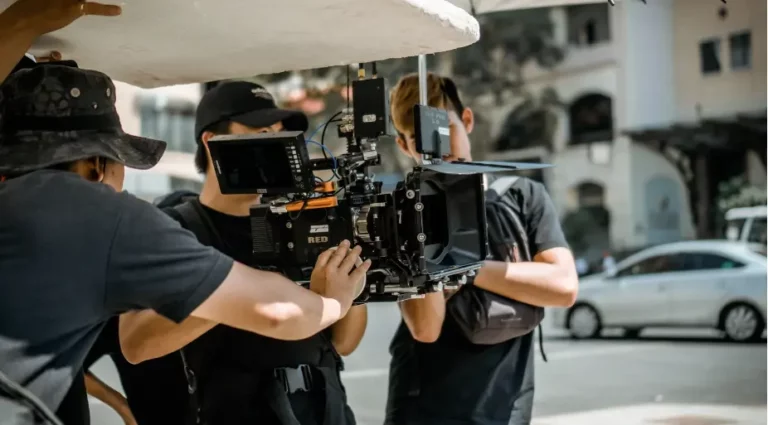Transforming the Film Industry: The Impact of AI on Cinema with PeakMet
Introduction
The film industry stands on the precipice of a new era, powered by Artificial Intelligence (AI). From scriptwriting and casting to post-production and distribution, AI is not just an auxiliary tool but a central figure in the cinematic revolution. This detailed exploration discusses how PeakMet is playing a crucial role in harnessing AI to redefine filmmaking, enhance creative processes, and optimize audience engagement.

Section 1: AI in Pre-Production and Scriptwriting
AI’s role in the early stages of film production is transformative, offering tools that assist with scriptwriting, plot development, and even casting decisions.
- Script Analysis and Enhancement: AI software analyzes scripts to predict audience reception, offering insights into dialogue, pacing, and emotional impact. This helps writers and directors craft narratives that resonate more deeply with audiences.
- Casting Optimization: AI algorithms process data from past performances and audience preferences to suggest casting options that could enhance the film’s appeal and performance.
Section 2: Revolutionizing Production Workflows
During production, AI technologies streamline operations, from camera work to set management, ensuring efficiency while maintaining creative integrity.
- Automated Cinematography: AI-driven cameras can automate certain shots, adjust lighting based on set conditions, and even suggest angles that might enhance the visual narrative.
- Real-Time Video Editing: AI tools provide preliminary edits and real-time video feedback during shoots, allowing directors to make immediate adjustments and experiment with different styles without waiting for the dailies.
Section 3: Post-Production Magic
In post-production, AI significantly cuts down editing time and enhances visual effects (VFX), sound design, and overall film quality.
- Efficient Editing: AI algorithms can quickly sift through hours of footage to find the best takes or suggest edits based on the director’s style and past decisions.
- Enhanced Visual Effects: AI models are used to create more realistic and complex VFX, often at a lower cost and with quicker turnaround times than traditional methods.

Section 4: Distribution and Marketing Innovation
AI is revolutionizing how films are marketed and distributed, predicting box office performance, optimizing release strategies, and personalizing marketing campaigns.
- Predictive Analytics for Release Strategies: AI analyzes market trends, competitor releases, and audience preferences to recommend optimal release dates and strategies.
- Targeted Marketing: AI evaluates consumer data to tailor trailers, posters, and promotional materials to the tastes of different demographic groups, maximizing engagement and anticipation.
Section 5: Audience Engagement and Analytics
Post-release, AI tools analyze viewer feedback across platforms to gauge reception and provide actionable insights for future projects.
- Sentiment Analysis: AI tools scan social media and review sites to assess audience sentiments, providing real-time feedback on what viewers loved or disliked about the movie.
- Viewer Preference Tracking: AI collects data on viewer preferences and behaviors, helping studios tailor future productions to audience tastes and improving recommendation algorithms.

Section 6: The Role of PeakMet in AI-Driven Cinema
PeakMet’s AI solutions are integral to each phase of film production and distribution. By offering customized AI tools tailored to the unique needs of filmmakers, PeakMet facilitates:
- Integration of AI Across Production Phases: PeakMet ensures that AI tools are seamlessly integrated into existing production and post-production workflows, enhancing creative processes without disrupting the artistic integrity.
- Data Management and Analysis: PeakMet provides robust systems for managing the extensive data involved in AI-driven film production, ensuring that data is leveraged effectively and securely.
- Training and Support: PeakMet offers comprehensive training for film industry professionals, ensuring that they can effectively use AI tools to enhance their craft and business strategies.
Conclusion
As AI continues to weave its narrative into the fabric of filmmaking, the industry is witnessing a shift not just in how films are made, but also in how they are perceived and consumed. With PeakMet at the helm, filmmakers are empowered to navigate this new terrain with tools that enhance creativity, streamline production, and optimize financial success, paving the way for a future where technology and art coalesce more seamlessly than ever before.


